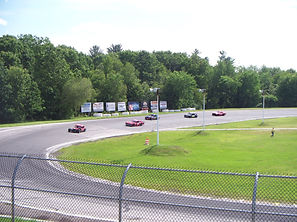

Maine Racin' done in '50s, '60s & '70s Style
Please feel free to contact Wicked Good by email at wgvrassoc@gmail.com, message us on Facebook at Wicked Good Vintage Racing Association, or call (207)861-2967 to hear the latest event update or for additional
There will be a general meeting on December 7th at the Fireside Inn in Waterville starting at 9am, two important items for this meeting, one is, we are working with the tracks and hope to have tentative dates for the club to select for the 2026 race season the other is for the division directors present their prospective driver list for 2026. PLEASE LET YOUR DIVISION DIRECTOR KNOW IF YOU PLAN ON RACING WITH WICKED GOOD IN 2026
Tracks

History of Race Tracks via Wikepedia
There is some evidence of racetracks being developed in several ancient civilizations. The most developed ancient racetracks were the hippodromes of the Ancient Greeksand the circuses of the Roman Empire. Both of these structures were designed for horse and chariot racing. The stadium of the Circus Maximus in Ancient Rome, could hold 200,000 spectators.
Racing facilities existed during the Middle Ages, and there are records of a public racecourse being opened at Newmarket in London in 1174. In 1780 the Earl of Derby created a horse-racing course on his estate at Epsom; the English Derby continues to be held there today. Racecourses in the British Isles are based on grass, known as turf tracks. In the United States, the race tracks are dirt.
With the advent of the automobile in the late nineteenth/early twentieth century, racetracks were designed to suit the nature of powered machines. The earliest tracks were modified horse racing courses. Racing automobiles in such facilities began in September 1896, at Narragansett Park in Cranston, Rhode Island. The Indianapolis Motor Speedway was opened in August 1909.
Beginning in the early 1900s, motorcycle races were run on high, banked, wooden race tracks called board tracks. During the 1920s, many of the races on the AAAChampionship circuit were run on such board tracks.
Modern racetracks are designed with spectator safety being paramount, following incidents of spectator and track marshals fatalities. These often involve run off areas, barriers, and high fencing.
